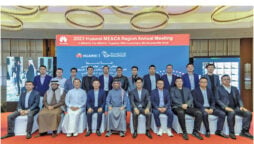
Managing Meetings and Musk’s Mantra
There is probably nothing more difficult in management than getting the most out of a meeting in the least possible time. I have attended meetings, which have been more of a social get together without the sofas and in a conference room rather than a lounge. And yes, I have been in meetings, which were crisp, to the point and wrapped up quickly. It all depends on who is running it. And, of course, the company culture.
My favourite witticism about meetings (sometimes adapted to a speech also) remains: a few people know how to start a meeting; even fewer know how to end it.
The Japanese had a tradition, don’t know if it’s still holding true, where they have their meetings standing up. In some cases, there are no chairs in the room. The thinking behind that has been that the people would want to get it over quickly as no one wants to stand for too long and tiredness sets in. So everyone wants to make the point quicker.
More importantly, the decision making is speedier, as everyone wants to get out of the room as soon as they can, again out of weariness and strain on the legs.
I am told by a couple of executives who work in the companies that are either owned or are in joint ventures with the Japanese companies, like in the automobile sector here for example, that weekly update meetings there have the same format. While consulting for a large manufacturing company linked with a Japanese firm, I attended meetings where charts were put up on boards all around the room and everyone moved from one corner of the room to another, while discussing the data and graphs. Lasted about an hour but all to the point and questions and answers all through.
Some companies also have non-reclining chairs in the conference rooms. The idea is to not make the participants too comfortable that they don’t want to leave, especially when more pressing matters are not awaiting them in their workstation or room. The less comfortable they are the quicker they would want to get up.
Of course, these days the new generation management and startups culture has meetings with the people sitting in bean bags and hammock chairs. Can’t get more comfortable than that but then I am told by some young guns that the meeting can go on for a long time, especially with snacks on the house and not just coffee and biscuits. Not that they will not be effective but I have read that one of the reasons that some startups ran out of money was because a lot of the time was spent lounging around by senior management in meetings, which were mostly about egos and storytelling and less focused on productive aspects and creative solutions.
Elon Musk touched on that a few days ago in an email he sent to all Tesla employees that was essentially about how to be more productive but which touched on how to manage meetings. It quite sums up what a meeting should be for and what actually goes wrong and its negative impact.
Don’t have unnecessary meetings, he said and to keep short the ones that have to be held. “Excessive meetings are the blight of big companies and almost always get worse over time. Please get (rid) of all large meetings, unless you’re certain they are providing value to the whole audience, in which the case keep them very short.”
Do not have too many meetings, he advises, unless it is an urgent matter. As he wrote: “Also get rid of frequent meetings, unless you are dealing with an extremely urgent matter. The meeting frequency should drop rapidly once the urgent matter is resolved.”
Leave the meeting if you are not contributing, he asserts. “Walk out of a meeting or drop off a call as soon as it is obvious you are not adding value. It is not rude to leave, it is rude to make someone stay and waste their time.”
Avoid technical jargon when you can, he believes. “Do not use acronyms or nonsense words for objects, software or processes at Tesla. In general, anything that requires an explanation inhibits communication.”
Moving on from Musk’s email, I also believe that every time you call a meeting, you must ensure to put in your invite the bare essentials. That would be:
Objective of the meeting
This helps to not only clear the minds of the participants and help them focus on the issue, it also allows them to come prepared with every aspect of what has to be discussed or resolved. For instance, to arrive at a decision or is the purpose consultation on the merits of a new initiative.
Ask to come with solutions
This helps save a lot of time. Often in meetings, I was asked to attend I would see that some participants only became aware of the issue at the meeting itself. Or at least a sub issue. It is imperative that in your invite once you have stated the objective, also mention the main points that have to be discussed or resolved. And ask the people to come prepared with solutions. By doing this some informal interaction will happen between some participants before the meeting to get info or advice from each other. This will result is less wastage of time, as the participants call for info from their department during the meeting.
Give a time limit
I have seen countless emails informing about the start time only. That makes it difficult to schedule work or other meetings. When you give an end time you are not only making it easier for everyone to plan their day, you are also letting them make a mental note of main points to get across before the end time.
Give the agenda
This is different from the objective. For example, the objective may be to decide on the expansion of a plant. The agenda would include space required, number of new machines to be installed, number and types of personnel, estimated increase in the utility bills and so on.
To re-emphasise this helps the people come with answers rather than calculating in the meeting. Ideally list them in order of priority so that if you run short and some participants can’t stay back, you have the major issues out of the way.
Nevertheless, it’s how you manage a meeting that’s important. It requires man management skills and a lot of tact. There will always be someone who will monopolise the discussion, often also interjecting the specialist on an issue.
I would always make it very clear in the beginning that we have limited time so mention the facts first and then elaborate. That way I could conclude the point once I’d had the necessary info or data on it.
Obviously you can run it like a robot. Sometimes you have to give allowance to some unnecessary chatter. Everyone have to be treated like adults. Being human, I could sometimes say the wrong word in the wrong tone but most of the time I tried to run the meeting by injecting some humour into the discussions and to even bail out a nonperformer now and then. The point would be taken up later one-on-one with whoever I felt was not prepared for them to be aware that they needed to do more.
Very important too that the meeting remains on track. The best way to do is to nip any discussion in the bud that is not relevant to the objective of the meeting.
“Let’s keep that for another meeting” or “That’s a good point but not relevant here” normally should bring the meeting back to its original purpose.
I would also have a look at my watch and mention how much time we had left. That would spur on the participants and bring back energy into the meeting. On that point, I must also add that whenever it was possible I’d schedule the meeting in the first half. Everyone knows the effect of lunch and subsequent digestion effect on attention to detail; in some cases any attention at all!
Lastly, I’d summarise in the meeting itself the key points arrived at, especially if they were decisions. Minutes often miss out on a point and very often participants do not read the minutes until just before the next meeting; by then it will be too late to correct or make up for what had to be done before that next meeting.
So yes, what looks like a simple task has a science and art to it. The more you master the two, the better you will have an effective meeting. And on time.
(The writer is a corporate consultant, coach and former CEO with over 35 years of experience in leadership, building brands and organisational strategy. He now advises on business strategy, marketing, HR and media management)
Catch all the Economic Pulse News, Breaking News Event and Latest News Updates on The BOL News
Download The BOL News App to get the Daily News Update & Live News.








 Read the complete story text.
Read the complete story text. Listen to audio of the story.
Listen to audio of the story.